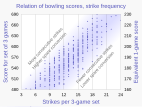20200324 Global average temperature - NASA-GISS HadCrut NOAA Japan BerkeleyE
Graphs of datasets from five scientific organizations were vertically adjusted, if needed, to a common reference/base period 1951-1980:
1. NASA GISS NAVIGATION PAGE:
- https://data.giss.nasa.gov/gistemp/graphs_v4/
- NASA GISS SOURCE:
- https://data.giss.nasa.gov/gistemp/graphs_v4/graph_data/Global_Mean_Estimates_based_on_Land_and_Ocean_Data/graph.txt
- Data: 1880-
- Base: 1951-1980
2. : SOURCE: HadCRUT.5.0.1.0:
- https://www.metoffice.gov.uk/hadobs/hadcrut5/data/current/download.html
- Choose "HadCRUT4 time series: ensemble medians and uncertainties", "Global (NH+SH)/2", "Annual". (Link invokes download window; earlier years pointed to text file)
- Data: 1850-
- Base: 1961-1990
3. NCDC NOAA SOURCE:
- https://www.ncdc.noaa.gov/cag/global/time-series/globe/land_ocean/12/12/1880-2021/data.csv (URL changes each year 2020-->2021-->2022 etc.)
- Data: 1880-
- Base: 1901-2000
4. JAPAN METEOROLOGICAL OFFICE DESCRIPTION PAGE:
- https://ds.data.jma.go.jp/tcc/tcc/products/gwp/temp/ann_wld.html
- SOURCE:
- https://ds.data.jma.go.jp/tcc/tcc/products/gwp/temp/list/csv/year_wld.csv
- Data: 1891-
- Base=1991-2020 (changed from 1981-2010)
5. BERKELEY EARTH SOURCE:
- http://berkeleyearth.lbl.gov/auto/Global/Land_and_Ocean_summary.txt
- Data: 1850-
- Base: 1951-1980
__________________________________
- Technical notes:
- — Early versions of this SVG file has a transparent layer of text objects. A copy of the text objects was converted to visible 'paths' in Inkscape, to avoid font rendering problems here. UPDATE: Later versions have native text only.
- — The XML code for Version 5 of this SVG image file (17KBytes; 2021-02-25) was automatically generated within Version 2.2 of the Excel spreadsheet linked immediately below. RCraig09 (RCraig09) 08:10, 25 February 2021 (UTC)
- Version 2.2 (LINE graph download)— Handles up to five traces. (24 Feb 2021)
I've uploaded .xlsx (Microsoft Excel) spreadsheets that automatically generate XML code for charts in SVG format.
You simply paste or enter your data into the spreadsheet, and specify image dimensions, number of grid lines, font sizes, etc. The spreadsheet instantly and automatically generates a column of XML code that you simply copy and paste into a text editor and save as an ".svg" file. The spreadsheets produce lean SVG code, avoiding the "extra stuff" that Inkscape inserts. They should save you time in creating SVG charts.
Feedback and suggestions on my talk page are welcome. RCraig09 (dyskusja) 23:41, 19 February 2021 (UTC)
- Warming stripes — Accepts a single dataset and converts to SVG code portraying Ed Hawkins' warming stripes graphics. User chooses vertical or horizontal stripes; normal or reverse data ordering; or from a variety of geometric shapes (updated 4 June 2021). . . . . Click here to see examples of warming stripes embedded in different shapes.
- Warming stripes bar chart — Accepts a single dataset and creates a conventional bar chart whose individual bars/columns are coloured according to Dr. Hawkins' warming stripes colour scheme. Alternate option: choose one colour for ascending bars and another colour for descending bars. (updated 27 Jan 2022)
- Line charts — Accepts up to five datasets. (updated 25 Jan 2022)
- Vertical bar charts (column charts) — Accepts up to six datasets. Toggle between clustered and stacked charts; user can adjust "Yfloor"—the Y level (usually=0) from which columns rise or fall; user chooses to keep or ignore negative input values. (updated 14 May 2022)
- Horizontal bar charts — Accepts up to six datasets. Toggle between clustered and stacked charts; user can adjust "Yfloor"—the value (usually=0) from which bars extend; user chooses to keep or ignore negative input values. (updated 27 Jan 2022)
- Scatter plots — Accepts up to five datasets. (updated 25 Jan 2022)
- Pie charts — Accepts a single dataset of up to 36 items. (updated 7 Oct 2022)
Więcej informacji o licencji można znaleźć tutaj. Ostatnia aktualizacja: Thu, 13 Oct 2022 06:28:28 GMT







